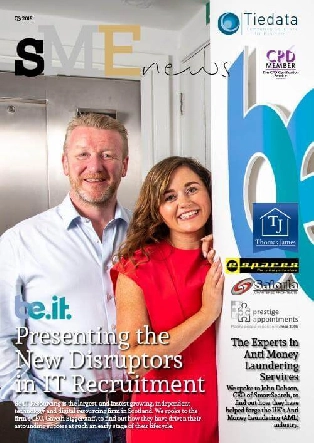The International Financial Reporting Standards (IFRS) 16 represents a significant shift in the accounting of lease agreements for companies reporting under IFRS. This standard, which came into effect in January 2019, replaced the previous IAS 17 lease standard. Its primary aim is to increase transparency and comparability across different organisations by ensuring that lessees and lessors report information about leasing activities accurately and consistently.
Fundamental principles of IFRS 16
At the heart of IFRS 16 lies the principle that all leases must be reported on a company’s balance sheet as assets and liabilities. This contrasts sharply with the previous guidelines, where only capital leases were capitalised, and operating leases could be off-balance-sheet arrangements.
Under IFRS 16, a lease is defined as a contract, or part of a contract, that conveys the right to use an asset for a period in exchange for consideration. This definition broadens the scope of what must be included in the financial statements.
Transitioning to IFRS 16
The transition to IFRS 16 can be complex, requiring companies to review and potentially modify existing lease contracts. Companies can choose between a full retrospective approach, applying the standard as if it had always been in place, or a modified retrospective approach, applying the standard only from the date of initial application. Companies like LucaNet can help you transition seamlessly – visit website here.
Identifying a lease
Identifying a lease under IFRS 16 involves determining whether a contract contains a lease. This is done by assessing if the contract conveys the right to control the use of an identified asset for a period in exchange for consideration. Control is deemed to exist if the lessee has the right to obtain substantially all the economic benefits from the use of the asset and can direct its use.
Lease liability and right-of-use asset
Under IFRS 16, a lessee records a lease liability reflecting future lease payments and a corresponding ‘right-of-use’ asset. The lease liability is measured at the present value of the lease payments, while the right-of-use asset is initially measured at the lease liability amount, adjusted by any prepaid or accrued lease payments, initial direct costs incurred by the lessee, and lease incentives received.
Impact on financial statements
The implementation of IFRS 16 impacts a company’s financial statements significantly. It increases both assets and liabilities, potentially altering key financial ratios. This can affect stakeholders’ perceptions and the company’s ability to meet certain regulatory or contractual requirements.
Accounting for lessors
For lessors, the accounting remains largely unchanged from IAS 17. Lessors continue to classify leases as either operating or finance leases. Operating leases will result in the lessor recognising lease income over the lease term, typically on a straight-line basis. In contrast, finance leases will result in the recognition of a receivable at an amount equal to the net investment in the lease.
Challenges and considerations
Adopting IFRS 16 poses several challenges for businesses, including the need to update financial systems and processes, reassess procurement and leasing strategies, and potentially renegotiate lease terms. The standard also requires significant judgement in determining lease terms, and discount rates, and assessing whether a contract contains a lease.
Lease term and payment calculations under IFRS 16
An important aspect of IFRS 16 is determining the lease term and calculating lease payments. The lease term under IFRS 16 includes non-cancellable periods of the lease, periods covered by an option to extend the lease if the lessee is reasonably certain to exercise that option, and periods covered by an option to terminate the lease if the lessee is reasonably certain not to exercise that option.
Lease payments are typically made up of fixed payments, variable lease payments dependent on an index or rate, amounts expected to be payable under residual value guarantees, and the exercise price of a purchase option if the lessee is reasonably certain to exercise it.
Discount rate and incremental borrowing rate
The discount rate used in IFRS 16 is another crucial component. This rate should be the interest rate implicit in the lease, if that rate can be readily determined. If not, the lessee uses their incremental borrowing rate, which is the rate the lessee would have to pay to borrow the funds necessary to obtain an asset of a similar value in a similar economic environment.
Disclosure requirements under IFRS 16
IFRS 16 also mandates specific disclosure requirements to ensure that users of financial statements have complete information about an entity’s leasing activities. These disclosures include information about the nature of its leasing activities, a general description of significant leasing arrangements, and information about lease liabilities and right-of-use assets.
Sublease accounting under IFRS 16
When a lessee subleases an asset, IFRS 16 requires the lessee (now a lessor in the sublease) to classify the sublease as a finance or operating lease. This classification is based on the right-of-use asset arising from the head lease (i.e., the original lease), rather than the underlying asset. This approach can sometimes lead to different accounting treatments for the head lease and the sublease.
Implementation challenges and solutions
Implementing IFRS 16 can be daunting due to its complexity and the need for significant judgments and estimates. Companies may need to invest in new accounting software, train staff, and possibly hire external consultants. To ease this transition, companies should start by conducting a comprehensive review of all contracts to identify which ones are or contain leases under the new definition.
The evolving landscape
As companies continue to adjust to IFRS 16, the landscape of lease accounting is evolving. This evolution could lead to further changes in how leases are negotiated and structured. It is crucial for businesses to stay informed and adaptable to maintain compliance and leverage strategic advantages in this new leasing environment.
The impact of IFRS 16
In conclusion, IFRS 16 brings about a paradigm shift in lease accounting, demanding greater transparency and consistency in financial reporting. While it presents challenges in terms of compliance and financial statement presentation, the standard ultimately enhances stakeholders’ understanding of a company’s leasing activities and financial commitments. As businesses continue to adapt, the full impact of IFRS 16 on corporate financial management and strategy will unfold, marking a new era in lease accounting.







